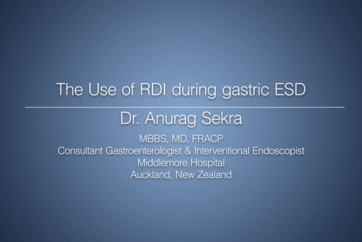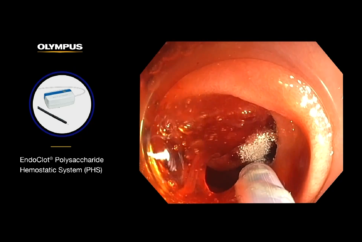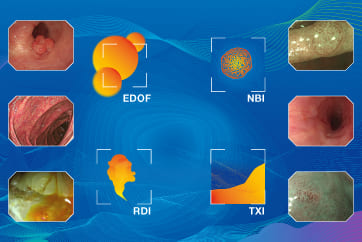Support Devices

Coagrasper Model FD-410LR
Dr. Toshihiko Doi
National Cancer Center Hospital East
Interview With The Expert
They minimise bleeding and are all designed with full consideration for safety. HotClaw is suitable for connecting the incised parts or when approach with the ITknife™ device is difficult. HotBite and the Coagrasper™ device are support devices for ESD procedure and should be used when required during it.
However, in positions where biopsy is difficult (where forceps should be positioned in the tangential direction), inevitably these devices are also difficult to use. In addition, cutting regions with strong fibrosis may be difficult. Due to the fact that, in present, coagulation results in strong degradation and electrosurgical systems have not yet been improved, these devices should be used as support devices. On the contrary, the ITknife™ device can cut those difficult positions mentioned above more easily and safely. For speedy cutting in the vertical position, the ITknife™ device will be the best. Please be noted, with any of these devices, grasping too much mucosa will lead to dropping the electrical resistance and adequate cauterization may become difficult even if the current is supplied.
The ITknife™ device is faster so I generally use it. I use other devices as support devices for now, but I believe the ITknife™ device has the lowest electrical risk. Using the appropriate device for a specific purpose is important, but there are affinities for each device, just like there are surgeons who are good at using Cooper, surgeons who are good at using an electrosurgical knife, etc. Select the device you use not from “rumors” but from the viewpoint of radical curability and safety.
Applicability of the Support Devices
Difficulty per region
○ : Easy. No mark: Ordinary. △ : Difficult.
| Cardiac region | △ | To facilitate, use a hood after circumferential incision. |
|---|---|---|
| Fornix | △ | Distance from the endoscope is a problem |
| Lesser curvature of upper body | △ | Shallow circumferential incision is recommended |
| Greater curvature of upper body | △ | |
| Anterior wall of upper body | △ | Use 2CH endoscope to facilitate. |
| Posterior wall of upper body | ◯ | Facilitated by using 2CH endoscope. Control bleeding. |
| Lesser curvature of middle body | ◯ | |
| Greater curvature of middle body | △ | Strip biopsy can be applied after circumferential incision. |
| Anterior wall of middle body | △ | |
| Posterior wall of middle body | ◯ | Can also be slightly retroflexed in the antrum. |
| Lesser curvature of lower body | ◯ | Facilitated by using a 2CH endoscope. Can also be slightly retroflexed in the antrum. |
| Greater curvature of lower body | △ | Strip biopsy can be applied after circumferential incision. |
| Anterior wall of lower body | ◯ | |
| Posterior wall of lower body | ◯ | |
| Lesser curvature of anterior wall | ◯ | |
| Greater curvature of antrum | ◯ | |
| Anterior wall of antrum | ◯ | |
| Posterior wall of antrum | ◯ | Facilitated by using 2CH endoscope. |
| Pyloric ring | △ |
Note for beginners: These devices are basically recommended for circumferential incision of a 30-mm (or less) differentiated carcinoma with preoperative diagnosis of m/ul (-). The operator must know another method besides ESD to complete the treatment in case continuing of ESD (Hemostasis, dissection, and incision) becomes unmanageable. If the curability is expected to be lower than that of piecemeal resection, do not attempt to perform ESD. Beginners should start with lesions that do not require dissection after circumferential incision. Keep in mind that ESD is an experimental medical procedure and patients’ curability as well as safety should be fully considered.
- Content Type





